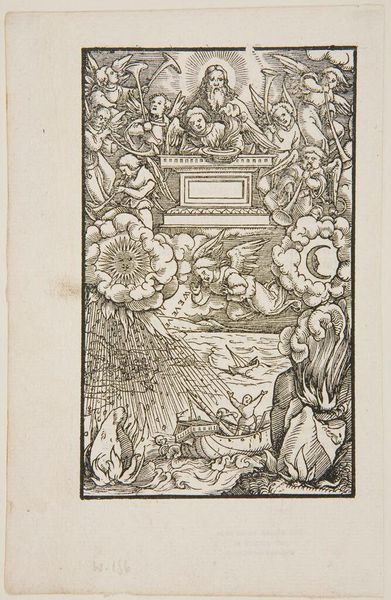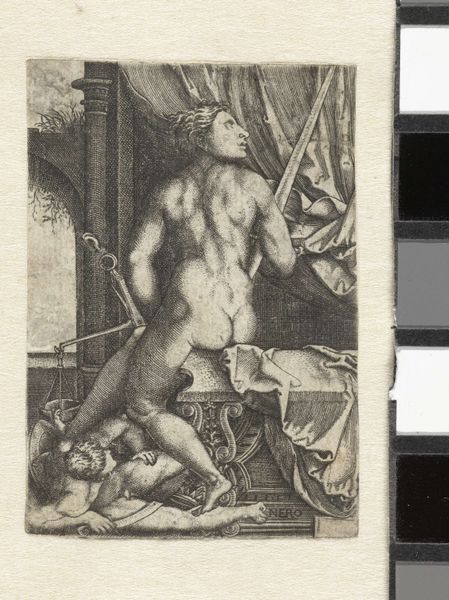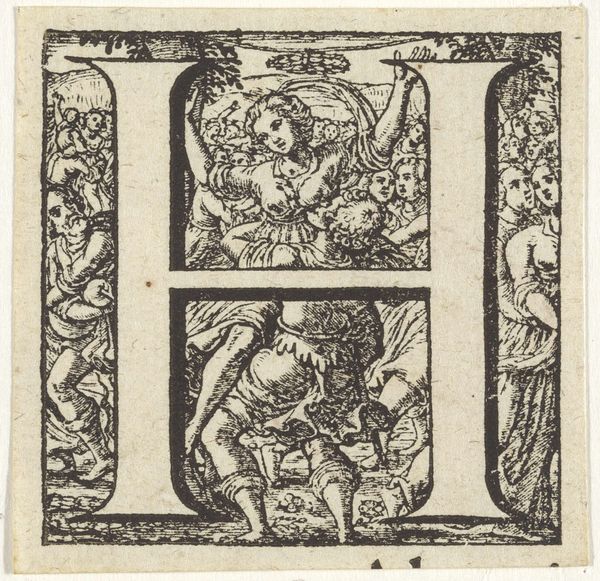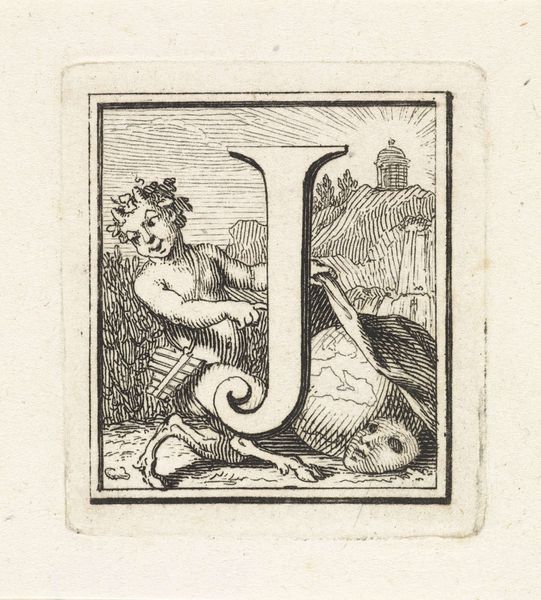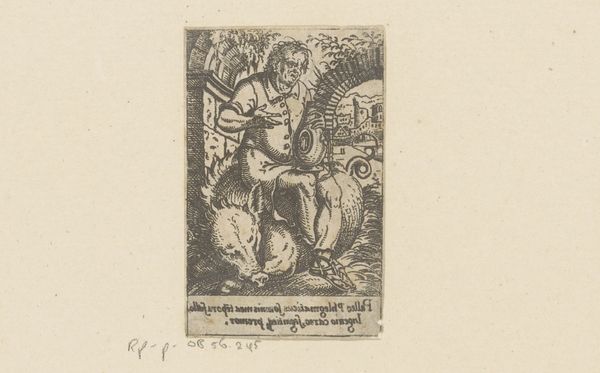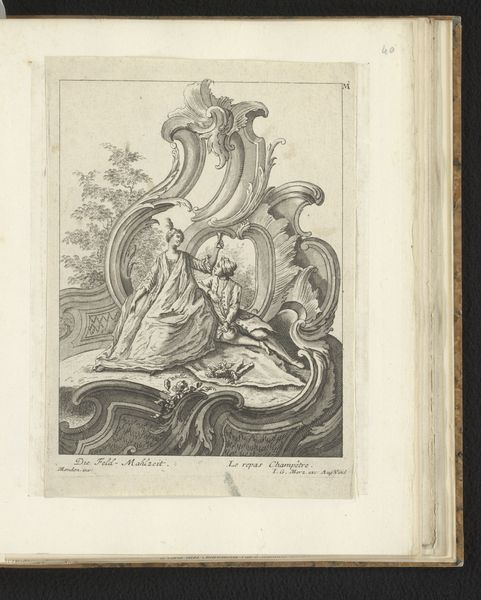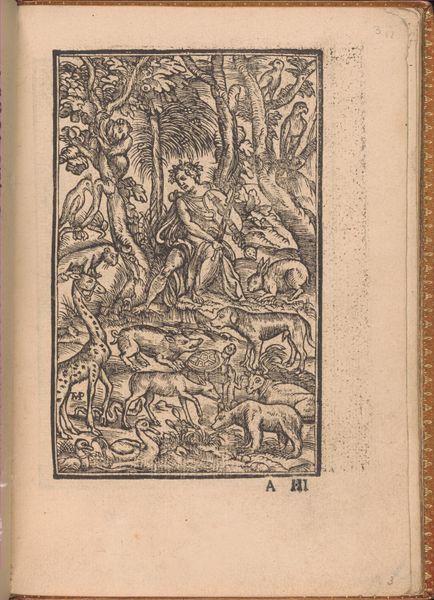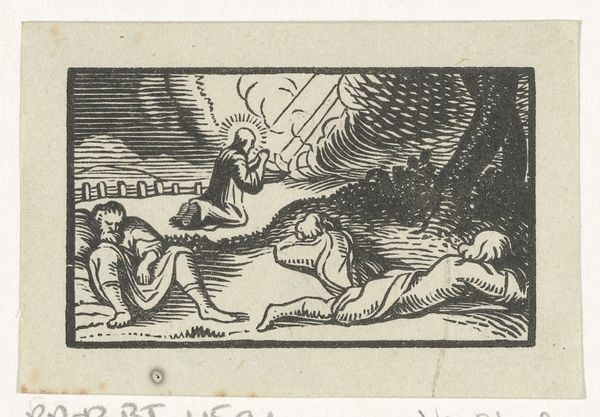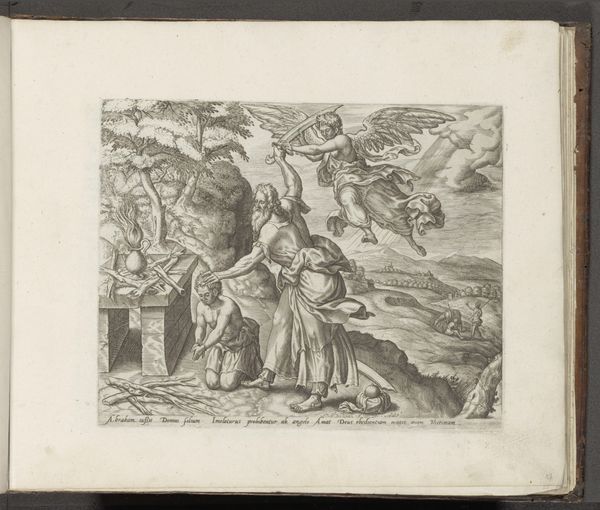
drawing, print, paper, pen, engraving
#
portrait
#
drawing
#
aged paper
#
toned paper
#
light pencil work
#
narrative-art
# print
#
pencil sketch
#
sketch book
#
figuration
#
paper
#
personal sketchbook
#
pen and pencil
#
line
#
sketchbook drawing
#
pen
#
storyboard and sketchbook work
#
northern-renaissance
#
sketchbook art
#
engraving
Dimensions: height 62 mm, width 44 mm
Copyright: Rijks Museum: Open Domain
Editor: This is Sebald Beham’s “Matthew and John the Evangelist,” made in 1520. It’s an engraving, so it’s very linear and precise, but also small. What strikes me is the contrast between the studious Matthew, intently reading, and the rather bored-looking John standing behind him. What do you see in this piece, especially from a historical viewpoint? Curator: That contrast is precisely where the power of this image lies. We need to consider the context of the Reformation. The act of reading, particularly of scripture, became politically charged. Notice how Matthew is grounded, connected to the earth, deeply engaged with the text. John, traditionally seen as divinely inspired, is almost detached, perhaps hinting at anxieties around interpreting scripture independently. Editor: So, you’re saying the artist is commenting on the changing role of the Church and individual interpretation? Curator: Precisely! Engravings like this circulated widely. They weren’t just devotional images; they were tools for shaping public opinion. Look at the level of detail Beham invests in Matthew's clothing compared to John’s simple garments. It's about emphasizing human agency and individual understanding within religious discourse. Consider where it would be displayed, its reception with common people, and how that further propagates individual ideology. Editor: That's a fascinating way to look at it. I was focused on the artistry, but I see how deeply embedded this image is in the religious and political climate of the time. Curator: Indeed. The power of art often resides in its ability to both reflect and influence social currents. Examining those currents provides context, shedding a completely new light on the composition and character.
Comments
No comments
Be the first to comment and join the conversation on the ultimate creative platform.
